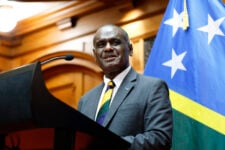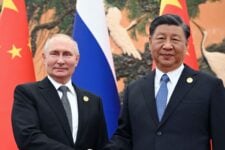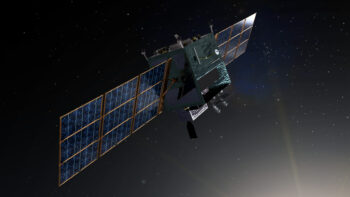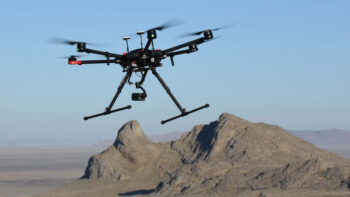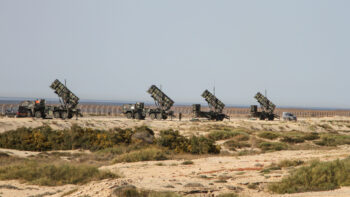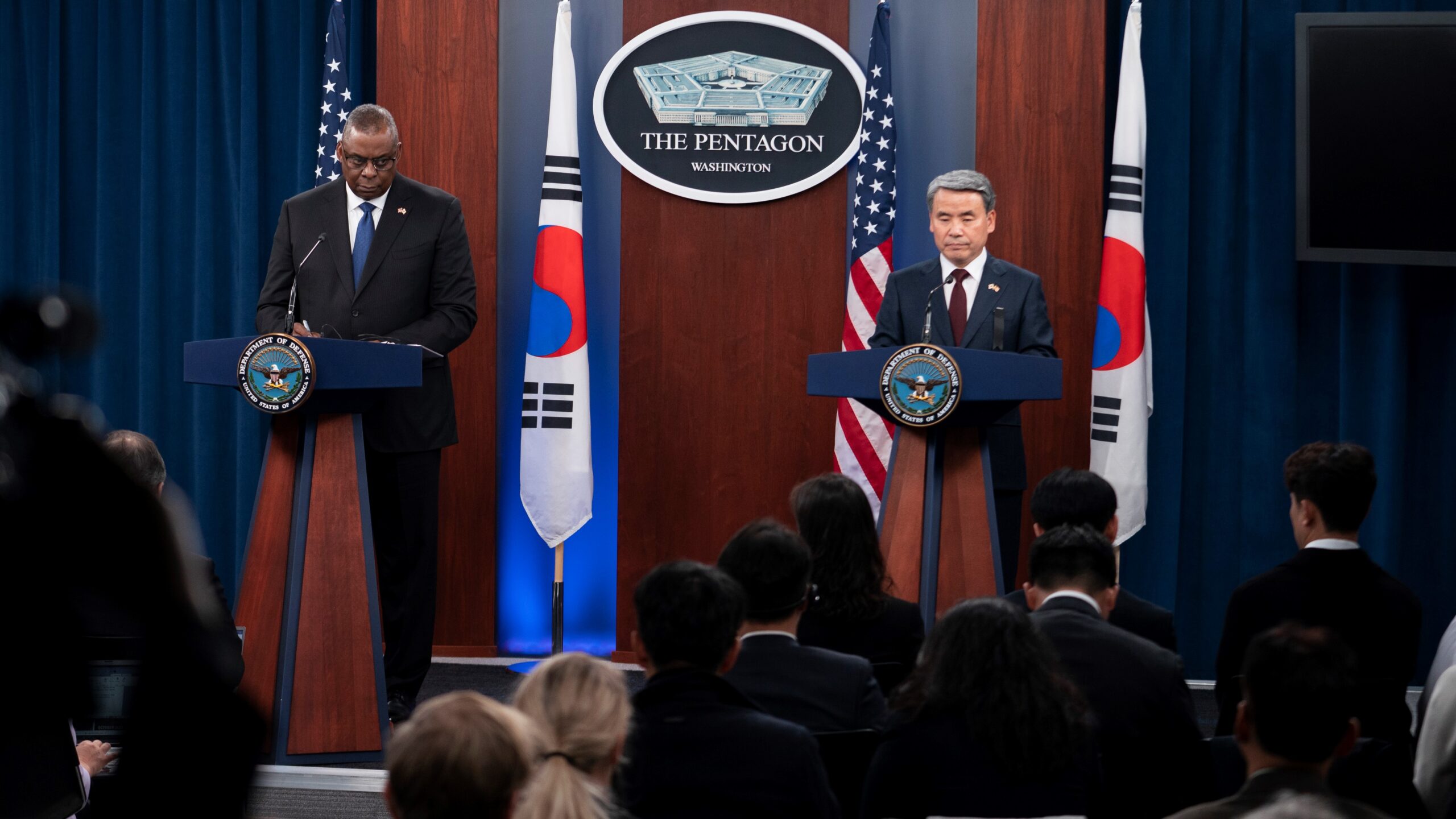
U.S. Secretary of Defense Lloyd Austin and South Korean Defense Minister Lee Jong-Sup participate in a news conference at the Pentagon on November 3, 2022. (Sarah Silbiger/Getty Images)
WASHINGTON — The United States will not shift its military posture on the Korean Peninsula due to provocative military actions taken by North Korea over the past month, including the new test of an intercontinental ballistic missile that occurred earlier today, according to Defense Secretary Lloyd Austin.
“We don’t have a plan to change our permanent positioning or stationing of assets on the peninsula currently … but you’ll see assets move in and out on a routine basis,” Austin said during a press conference following a meeting at the Pentagon with his South Korean counterpart, Lee Jong-Sup.
Today’s ICBM test — which was followed by the launch of five short range missiles, all of which landed in the sea — marks the latest in a burst of North Korean missile activities. The Associated Press reported that North Korea has already broken its annual record for ballistic missile tests, hitting a new daily record on Wednesday after launching 20 missiles.
Both Austin and Lee condemned the ICBM test, with Austin calling it “illegal and destabilizing” to the region and repeatedly underscoring the United States’ “ironclad” alliance with South Korea.
“Any nuclear attack against the United States or its Allies and partners, including the use of non-strategic nuclear weapons, is unacceptable and will result in the end of the Kim regime,” Austin told Lee, according to a joint communique released by the Defense Department. In his own comments, Lee used the same language to warn North Korea explicitly against the use of tactical nuclear weapons.
RELATED: No US missile defense system proven capable against realistic ICBM threats, study says
In response to the ICBM tests, the US and South Korea agreed earlier today to extend a bilateral air force exercise known as Vigilant Storm, which was originally slated to run from Oct. 31 to Nov. 4. The US and South Korean air forces are planning to launch a combined 1,600 sorties over the course of the drill — the largest number ever for the event — involving about 240 aircraft.
“They’re doing a number of high-end types of training events, conducting a number of high-end types of training,” said Austin, who did not address how long Vigilant Storm would continue. “All of that is designed to ensure that we have the ability to defend the peninsula, if called to do so.”
At the same time, Austin rebuffed questions about whether the upswing in North Korean provocations meant that deterrence had failed, stating that the ultimate goal for the US is to prevent any attacks against South Korea as well as the use of nuclear weapons.
“It could be that” North Korea “may be concerned about our increased focus on readiness,” he said, pointing to the increase in bilateral military exercises and a number of high profile deployments, such as a port visit by the aircraft carrier USS Ronald Reagan to Busan in September and F-35 operations over the peninsula this summer.
During the meeting, Lee and Austin also agreed to deepen US and South Korean cooperation with Japan by establishing trilateral senior level policy consultations, information sharing, training and personnel exchanges, Lee said. Lee also pledged to resume trilateral defense policy talks, which had previously been held at the assistant secretary of defense level before being suspended.

